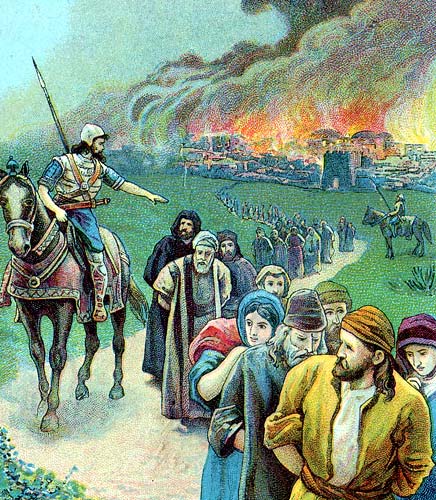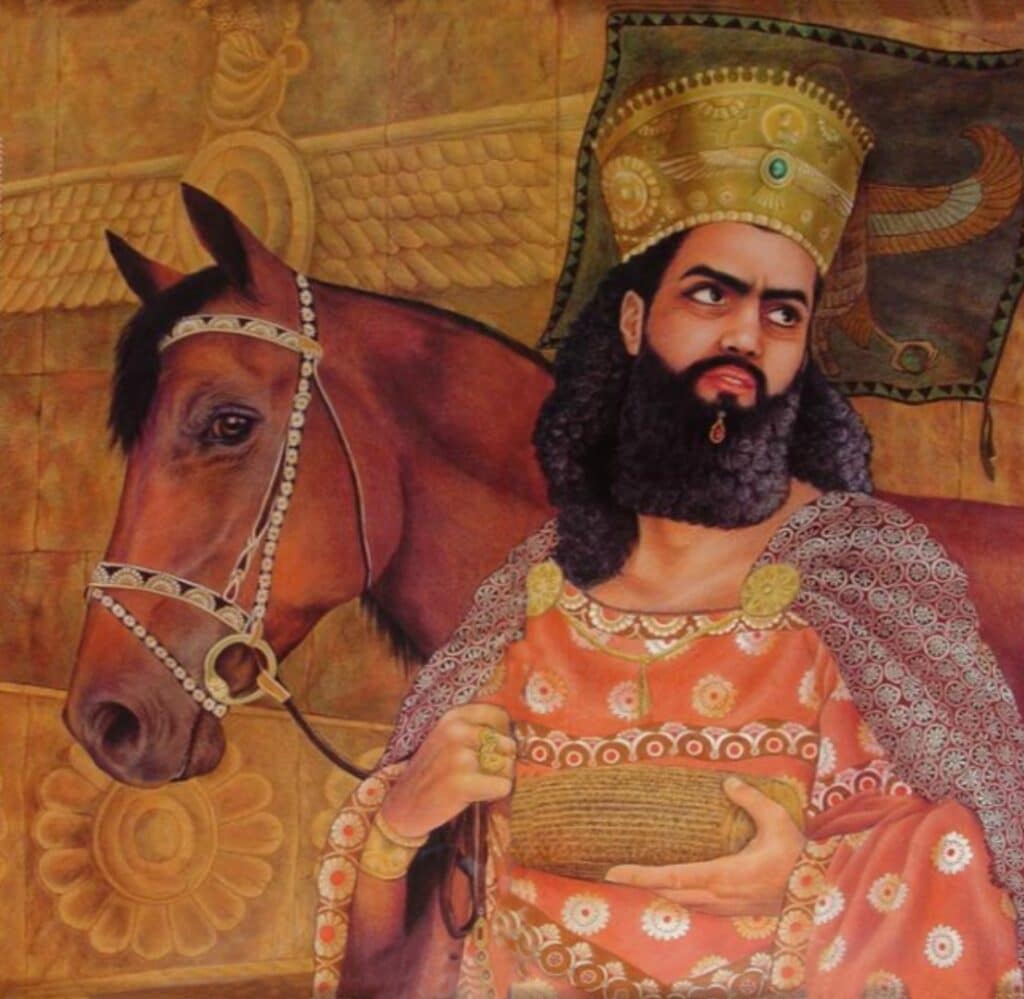This Week in History recalls memorable and decisive events and personalities of the past.
12th October 539 BC – The army of Cyrus the Great of Persia takes Babylon, ending the Babylonian Empire

Contemporary artwork depicting Babylon at the height of its stature [Bazil Amin, https://commons.wikimedia.org/w/index.php?curid=110795894]
Even thousands of years later, the fabled city of Babylon invokes images of beauty, decadence and wonder. This ancient city in modern-day Iraq has a complex and deep history stretching back into the Bronze Age, and was the seat of multiple empires, including two which share its name.
Founded as a city around the year 1894 BC along the banks of the Euphrates River, for the first century of its life Babylon was a minor city state among the many city states of Mesopotamia. Some sort of settlement likely existed around the area of Babylon since at least the 2200s BC. Around 1792 BC a new king came to power in the city, a man called Hammurabi.

Hammurabi (standing) receiving his royal insignia, depicted on the Code of Hammurabi stele held by the Louvre Museum in Paris [Mbzt, https://commons.wikimedia.org/w/index.php?curid=59794940]
Hammurabi is famous for one of the earliest and most comprehensive written codes of law in human history. The code, including 282 laws, was the first in world history to begin establishing the principles of accused people being innocent until proven guilty, and of both sides of a case providing evidence.
Hammurabi also embarked on a series of conquests, subjugating most of southern and central Iraq. His empire would endure long past his death, until around 1595 BC when the Hittites from Anatolia attacked and destroyed Babylon.
Babylon would be rebuilt – but for the next 500 years it was ruled by a foreign people called the Kassite Empire. Around the 1100s BC the Babylonians revolted and reestablished local rule over their city. However, it remained a small city state.
After a series of internal disasters and civil conflicts, the expansionist Neo-Assyrian Empire intervened in Babylonian politics and would add Babylon to the Assyrian Empire in 729 BC.

Neo-Assyrian relief depicting some Assyrian individuals in a procession [Denis Bourez, https://commons.wikimedia.org/w/index.php?curid=30316910]
The Assyrians would rule Babylon for a century until a revolt by the Babylonians in 626 BC reestablished the city as a power player. The Babylonians faced a major counterattack by the Assyrians, but revolts in the Assyrian Empire forced the Assyrian army to retreat. By the year 620 BC the Babylonians had regained much of Mesopotamia from the Assyrians.
In 615 BC the Medes from modern-day Iran invaded and began conquering Assyrian land. Caught in internal conflict and with much of the empire’s territory lost to Babylon, the Assyrian Empire began to disintegrate. The Babylonians and Medes signed an alliance and picked apart the Assyrian Empire, brutally sacking the Assyrian capital of Nineveh in 612 BC.
The rinal Assyrian king was defeated in 609 BC, and despite attempts by the Egyptians, who were allied to Assyria, to continue the war, the Assyrian Empire was destroyed for good.
In 605 BC, a new king of Babylon came to power, a man called Nebuchadnezzar II. Nebuchadnezzar would become immortalized in history for allegedly building the Hanging Gardens of Babylon (which may not have existed) and for his conquest of the Levant, a region previously subjugated by the Assyrians.

Nebuchadnezzar II ordering the construction of the Hanging Gardens of Babylon to please his consort Amytis, by René-Antoine Houasse (1676)
Most infamous of these conquests was the conquest and destruction of the Hebrew kingdom of Judah in 587 BC and the subsequent deportation of much of its population to Babylon, a pivotal moment in the Old Testament of the Bible and critical point in Jewish history, known and the Babylonian Captivity.

The destruction of Jerusalem and the beginning of the Babylonian Captivity, as depicted in an early 20th-century Bible illustration
The Babylonian Empire was not to last, however; after Nebuchadnezzar’s death the empire fell into internal conflicts.
In the year 539 BC, on 12 October, a new power attacked the city of Babylon, that of the rising Persian Empire under their legendary King Cyrus the Great. Cyrus would famously allow many of the captive populations the Babylonians had imported into their city of Babylon to return to their homelands, including the Hebrews.

Cyrus the Great [Siamak, https://commons.wikimedia.org/w/index.php?curid=120887013]
Babylon was incorporated into the Persian Empire and remained a very important city of the empire for centuries.
When Alexander the Great of Macedon conquered the city after the 331 BC Battle of Gaugamela, the city would serve as a key base for him as he marched east towards India. Alexander would later die in Babylon, in 323 BC.

Alexander the Great receiving the keys of Babylon, by Johann Georg Platzer, c. 1740
After Alexander’s death the city fell into decline, as it was ravaged by the civil wars fought by Alexander’s successors. In 275 BC, the population was mostly transferred to the new Greek city of Seleucia to the north. The city would never again hold the same prominence in the region, being eclipsed by cities like Seleucia, Ctesiphon and Baghdad.
If you like what you have just read, support the Daily Friend


